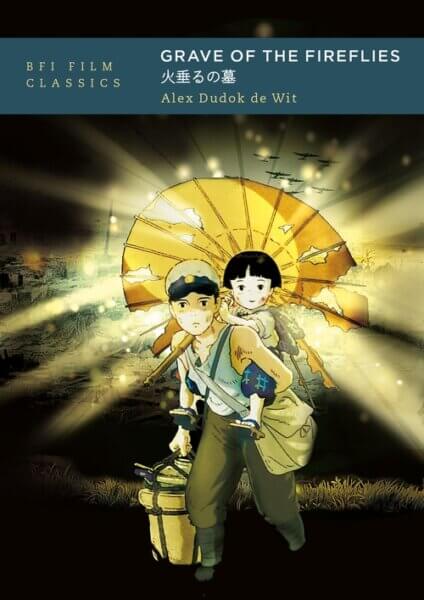Book Review: ‘Grave of the Fireflies (BFI Film Classics)’
BFI Film Classics: Grave of the Fireflies
Author: Alex Dudok de Wit
Publisher: Bloomsbury/British Film Institute
I’m ten years on from my first viewing of Grave of the Fireflies and I still remember the profound impact it had on me. For most who’ve seen the film it is remembered as an emotional ordeal and spoken about in reverential tones; an untouchable masterpiece of animation. Alex Dudok de Wit’s new book Grave of the Fireflies for BFI Film Classics bravely takes on the challenge of discussing the film – its origin, context, story, production and legacy – through a critical lens and makes a thoroughly interesting, enlightening read.

For those who don’t know the film, the story follows Seika (14) and his sister Setsuko (4) who try to survive alone in the aftermath of the firebombing of Kobe in 1945. It is without doubt a tragedy, and my first revelation from Dudok de Wit’s book is that the film is based on a novella, which in turn was based on true events in the author’s childhood. By examining how the director Isao Takahata adapted this story Dudok de Wit analyses his motives and sensibilities, placing the film within the canons of Japanese Storytelling, Ghibli, Animation and War Cinema with specificity and context.
Dudok de Wit deeply explores the criticism that the film perpetuates a victim narrative, where the Japanese were innocents in the Pacific War, and deconstructs the struggle that Japan has with its war legacy. He discusses all the characters who Seika and Setsuko interact with and how the mitigating circumstances of war turned once community-minded civilians to think of their own interests first. Takahata in fact intended the film to be an opportunity for Japanese audiences to engage in self-reflection:
This [Fireflies] is no mere tearjerker: … just below its surface lies a thorny examination of how people interact and take responsibility … the tension between its tragedy and social commentary gives the film an unusual charge.
Dudok de Wit puts ideas into words in a wonderfully lyrical manner. One of my favourite explanations was on why the novella was so successful adapted as animation instead of live-action (which could reasonably be argued as the medium for greater naturalism):
Animation enriches the film’s symbolism and serves the poetic disposition of its story. … The essence of animation may be the creation of movement out of static images, but with that comes a capacity to deploy stillness for aesthetic effect, which this film exploits marvelously.
For any who might be put off this book by its description as a ‘critical treatment’, please don’t be. Far from being stuffy or overly academic, Dudok de Wit’s writing is highly engaging and I would recommend for any fan of the film. He breaks the story into its three acts and includes stills to help illustrate his points, which makes his analysis easy to follow. He also goes into detail about the production of the film and the relationship between Takahata and Miyazaki, which Ghibli fans in general will enjoy to expand their understanding of the early years of the studio.
The analysis of Japan’s imperialist past and post-war pacifism within the book is fascinating and Dudok de Wit goes into some detail about Takahata’s later activism to protect the sanctity of pacifism within Japan’s constitution. Do not be alarmed that this is a tome though – the book is an inviting 100 pages, short enough to feel light and easy and with suggestions towards areas for further reading which the interested can pursue.
The book greatly enhanced my enjoyment of watching Grave of the Fireflies again, adding layers to my understanding of the film, Japanese consciousness about the war and a new appreciation of exactly what Takahata achieved. The BFI Film Classics series’ remit is to ‘introduce, interpret and celebrate’ a worthy feature, and Alex Dudok de Wit has done this challenging film a real justice.
BFI Film Classics: Grave of the Fireflies will be released May 6th

